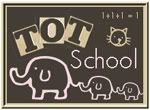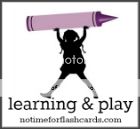Reading, writing, spelling. All these boil down to one word - literacy. When it used to be just literacy of words in print, in today's world, we are constantly challenged by more than just the printed word. We are inundated by visuals, images on the TV and on gadgets, thanks to technology.
What has become of literacy in the 21st century, and what are the challenges that we face as parents? How do we develop literacy in our children? How important is bilingualism in today's world?

I'm very happy to introduce Julia Gabriel, founder of Julia Gabriel Education. Think literacy, and the name Julia Gabriel is one of the key names that come to mind. An accomplished storyteller, performer, speaker, lecturer with a Masters in early childhood education, Julia has written and recorded television programmes for Singapore's Ministry of Education. She shares with us her insights into 'literacy in the 21st century'.
What is literacy? Is it just about knowing how to read?
Literacy is the ability to make meaning from language. It has five forms – reading, writing, listening, speaking and viewing (through technology).
How important is literacy in today's technological world? Why?
Literacy is even more vital today because communication has become global. In this century it is more necessary, and more complex, to communicate and interpret meaning across cultures through technology. Viewing was recognised as an additional and vital form of literacy about 10 years ago.
The term 'literacy in the 21st century' is increasingly used. What does it mean? What kind of challenges does it present to parents? What can parents do about it?
Literacy in the 21st century involves understanding many different forms of literacy (eg the language we use in text, a formal letter, academic writing, spoken formal and informal language are all different) and the appropriate uses of each in different situations. The challenges that parents can rise to involve exposure to different forms of literacy and engaging children in many different areas of language and text.
Is visual literacy part of this? What is it? Why is it important?
Literacy is essentially the ability to speak, listen, read and write. Today, as so much of our communication is through technology, the breadth of literacy has extended to include viewing communications other than words: For example, images. There are so many images in our communication now (in magazines, newspapers, television, advertising on hoardings, buses and cereal packets, and on the internet), that we recognise visual literacy, the ability to read images, as an important skill for our children to learn.
Visual literacy involves the ability to understand, to see and to think graphically, using and interpreting different layouts, fonts, graphics and images (photographs, paintings and drawings) that all form part of communication. The overall look and feel of print, its layout and illustrations, all contribute to the texture and meaning that help us to understand the writer's intention. So, yes, visual literacy today is important para-language or additional means we can choose to add to language, to communicate our meaning. For example, in speech, we also use the face, hands, eyes and body to convey shades of meaning. In text, or written language we can shade what we say using various forms of visual literacy. This makes a HUGE difference... For example the SIZE of words in print lets you know how IMPORTANT they are; different FONTS and COLOURS all add to the meaning.
Literacy is complex and challenging and its growing and developing constantly! When I was in school we had to learn to write. Now children have many additional means of expression available in print. The development of literacy skills takes time to deepen. The first level in reading is the ability to de-code letters into sounds and eventually words, before reading comprehension becomes important and requires critical thinking to understand the depth and shades of meaning behind words. Poetry is a good example of this. Similarly, visual literacy begins with understanding the meaning in illustrations, art and graphic options and develops to include the ability to critically evaluate a chart, map, layout and design for suitability of function.
How does a parent nurture visual literacy in their children? Can you share any tips?
Parents need to stay abreast by reading widely, going to the library with their children, and talking about the print and visuals they see in the environment, because their children’s literacy will leap ahead of their own. A parent’s role is to talk about visual literacy, converse, discuss, challenge and critique what they see with their children so it is alive and valued in the family. Parents can talk about what they see in print adverts, on labels at the supermarket, in logos of companies that bombard us as we walk down the road. Consider the distinctive shape of Apple, the swoosh of Nike, the arches of Macdonalds. All these form the visual literacy we learn to recognise and "read." Ask children what they mean to them. Which do they like? Why? Talk to children about their views on what they read, see and experience.
Enjoy, read and share poetry with them. Poetry is art in words and shows children how they can use the look and feel of writing to add to the meaning. For example Lewis Carroll's "The Mouse's Tail" from "Alice in Wonderland is written in the shape of a tail, a distictive mouse's tail! Shape poems 'show' as well as 'tell' the story, incident or person they describe, much as headlines in a magazine or newspaper advertisement do. I believe that if parents are readers and are interested in the developing world, their children will be too. What's more, their children will still want to share their ideas with them and bring home their findings to discuss, long after their ability has outshone their parents' as it is bound to do, in time.
Is there any way to make the home a conducive environment for promoting visual literacy?
Yes, definitely! Read, discuss, share and fill your home with books, magazines and periodicals that you read together or view on line with your children. Make literacy in all forms a shared activity and interest for the family.
If I let a child watch TV, or play with the iPad, am I not nurturing visual literacy, since they are 'visual mediums'?
Beware! Many Apps and gadgets are addictive. The research is not yet long enough to be conclusive but the evidence is there. Monitor your child’s exposure to TV and limit particularly time spent using Apps on computers, and smart phones; limit time spent and also be sure to be involved with your child during these times.
Looking at literacy in general, can you share tips on how parents can nurture literacy in the home environment?
Read, talk, converse, discuss, share, write together, read together, play together, use language, communicate. Everyday conversation is the foundation of all language and literacy.
Let’s look at bilingualism. How important is bilingualism in today’s world? Why?
The more languages a child learns, the more the intelligence is stretched through new neural connections, so bilingualism (equal fluency and ease in two languages) gives your child an advantage over monolingual children. As our communication and connections become more global in nature, our children need to know how to communicate with other cultures so other languages are clearly advantageous, too.
What can parents do to nurture bilingualism at home?
Try to enable your child to learn languages through associations: one person, one language. So maybe Daddy speaks English, Mummy speaks Mandarin and you decide on one of these as a common code for when you are all together. Alternatively you can tie the associations to times of day. For example meal times and bath-time in Mandarin. I have seen this work successfully in many families. For a child to be truly bilingual he will need equal exposure to both languages, so roughly equal time and importance placed on each. Make sure you have an equal number of books and games and frineds to play with in each language too.
When is the best time to nurture language and bilingualism in children? Would they become confused if parents use too many languages to communicate with them?
Start at birth or before if possible by singing and talking to your child in the womb! Learning languages is child’s play if we start early when children are “programmed’ to learn and at their most senitive to hearing the different patterns in each language. The first three years are the most sensitive time. More than one language doesn’t confuse children if parents keep the associations clear for them, as above. They are too smart for that – it’s parents who worry and limit children’s potential to learn.
Nowadays, there are pre-schools and kindergartens that offer English-focused, Mandarin-focused and Integrated curriculums. In your opinion, which is most beneficial? If parents can only send their children to either English-focused or Mandarin-focused schools, what can they do to nurture appreciation in the other language?
In Singapore, school curriculum is all taught and communicated in English; this is our most important language. Mandarin is only a second language, or Mother Tongue subject, in school. It depends, really, on what parents can support at home. If you can support speaking Standard English at home, then you may choose a Mandarin focused preschool but if you can’t, do make sure your child has exposure and a focus on the Standard English he will need in school, when he’s young enough to learn it easily. To nurture appreciation in the other language find activities with Standard language speaking teachers – drama, art, dance etc – that your child is motivated to do and enjoys, so that he learns the language effortlessly while engaged in the activities.
Please tell us more about yourself. What inspired you to set up Julia Gabriel Education? How many children do you have?
I studied how to teach, and how children learn, when my son was five and I realised that I was ill equipped to help him learn optimally. I studied to be a Speech and Drama teacher because that was the subject that had helped me gain confidence and ability to communicate expressively as a child. I was a very shy child so I know how important confidence is to underpin all learning and communication. Later, I did a Masters degree in early childhood education to broaden my learning and became a researcher. I love my work and have been really lucky to find my passion through my children. Today I research language and learning and train teachers in my philosophy, EduDrama. I have two adult children. Mark, aged 38, and his wife Aggie teach with me at Julia Gabriel Centre. My daughter Emma, aged 32, lives in London. In Julia Gabriel Centres around the world I am fortunate to have many more children and I also support and am actively involved with 64 Shan children in an orphanage in Chiang Mai, Thailand.
**********
Thank you Julia.
**********
Thank you for reading. If you like this post, please do connect with me on Facebook, Instagram and Twitter, so I can share our fun adventures, thoughts and exploits with you.












































